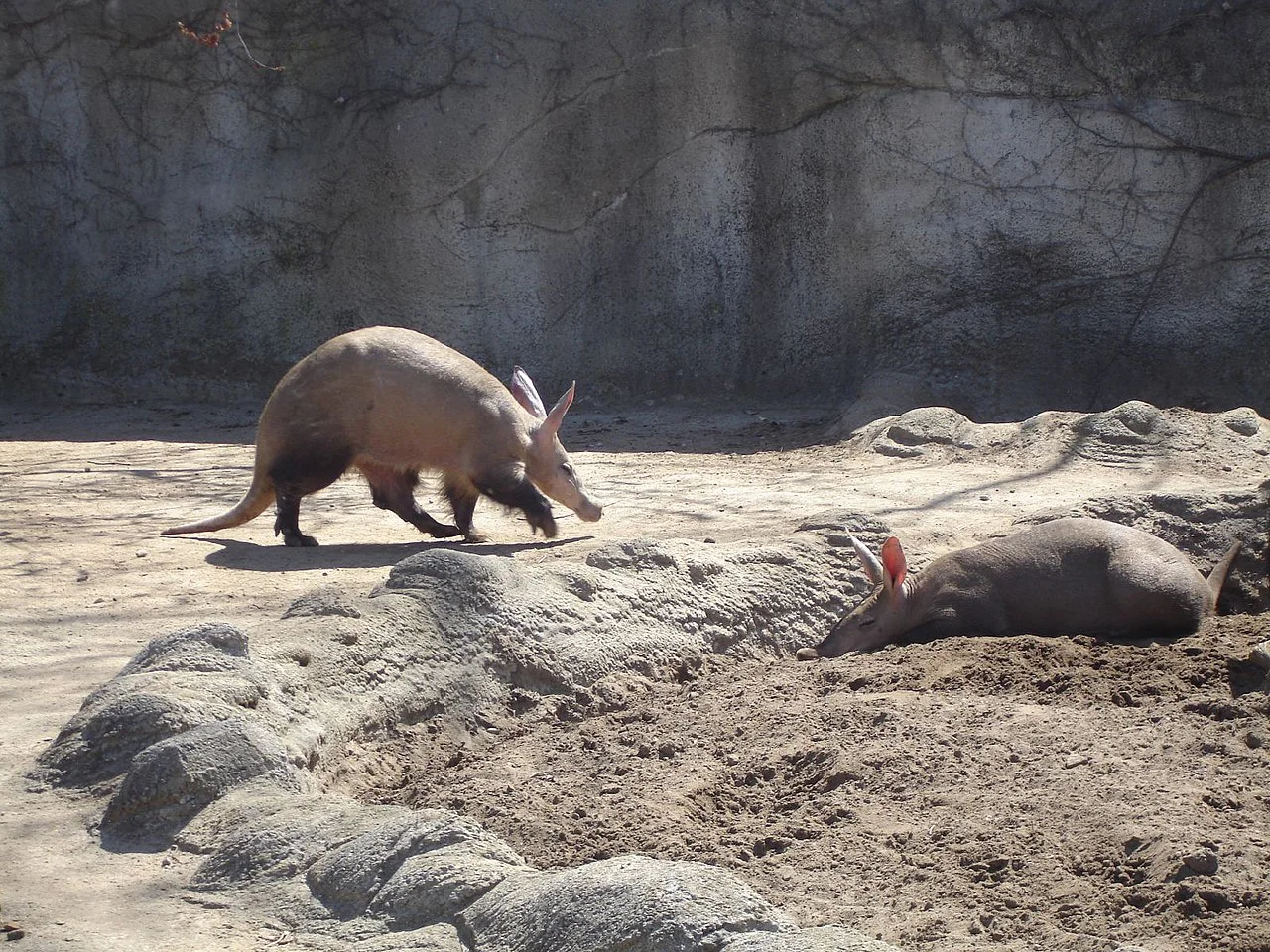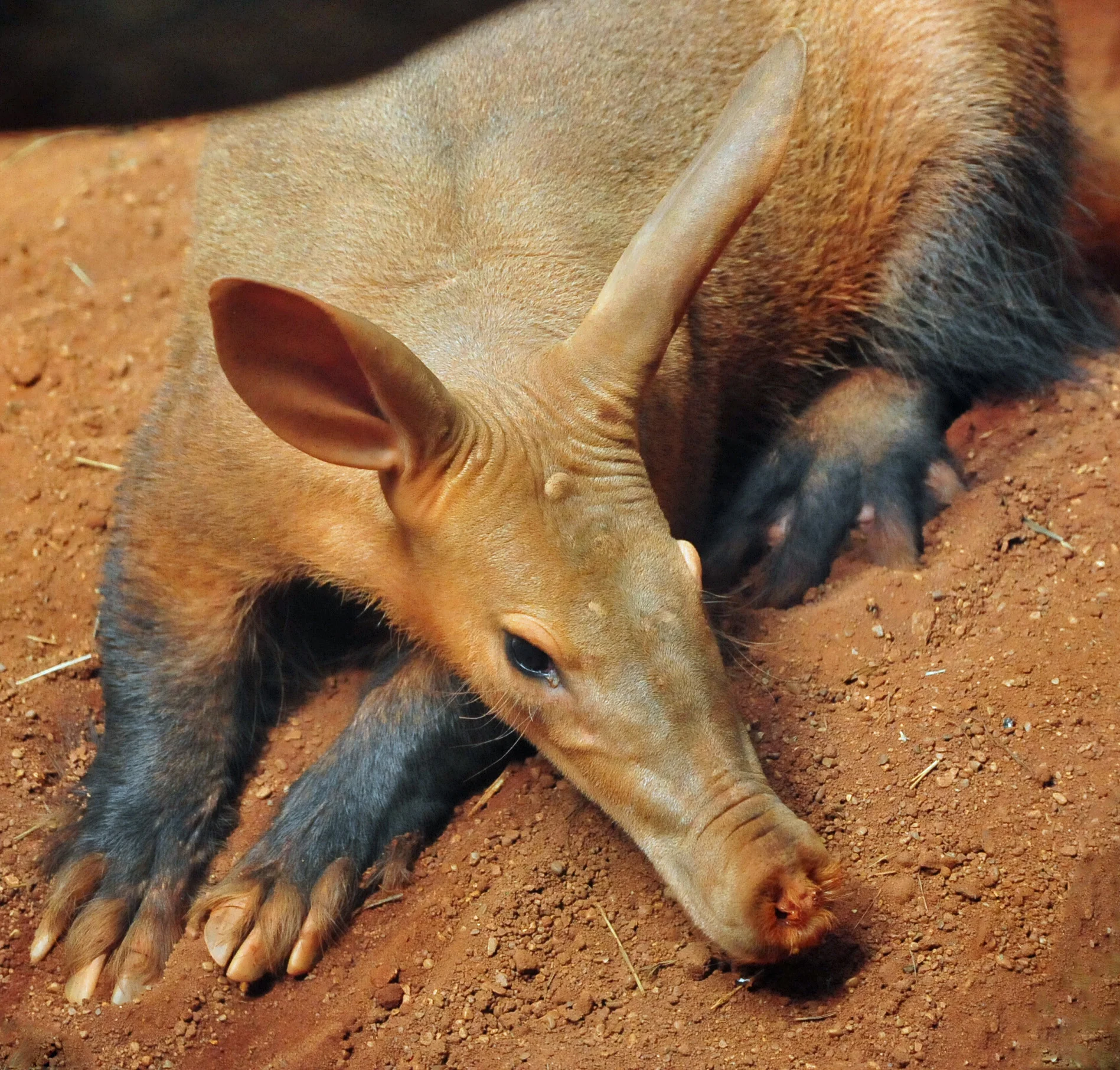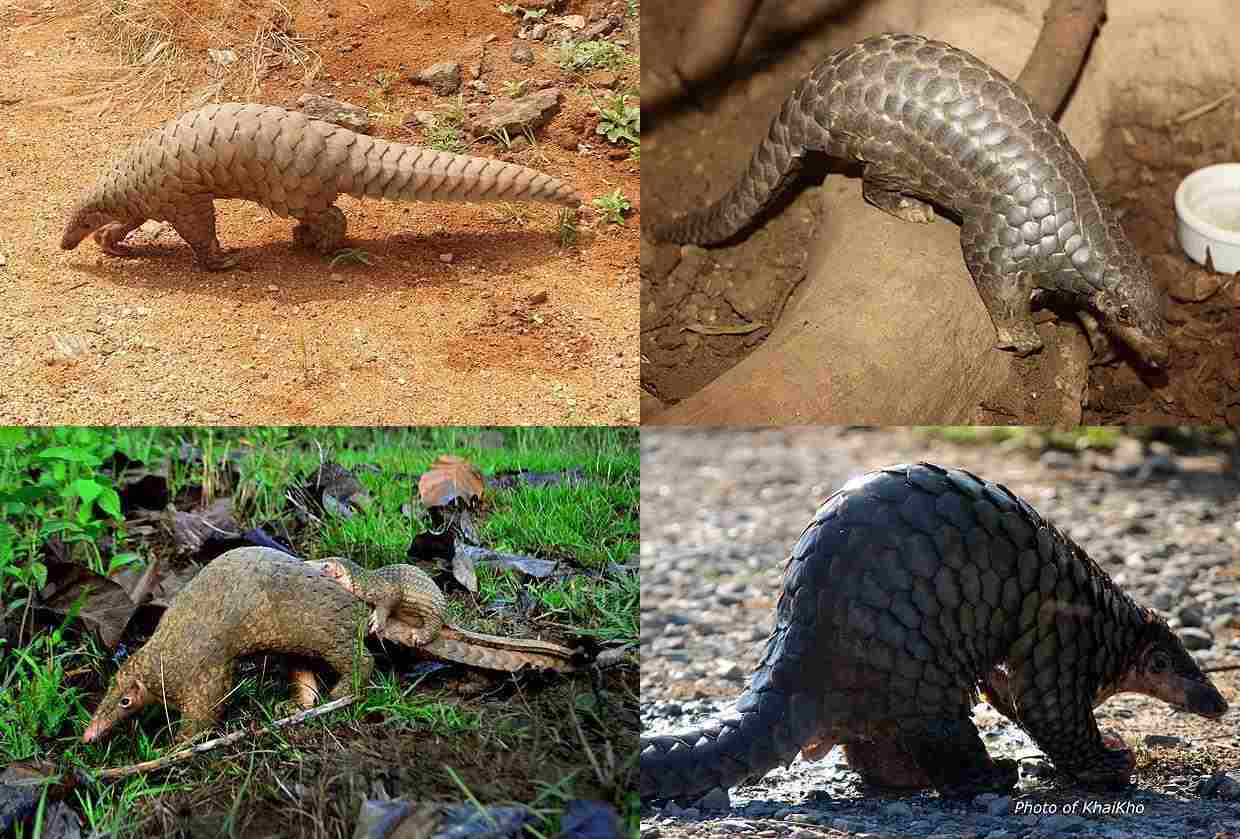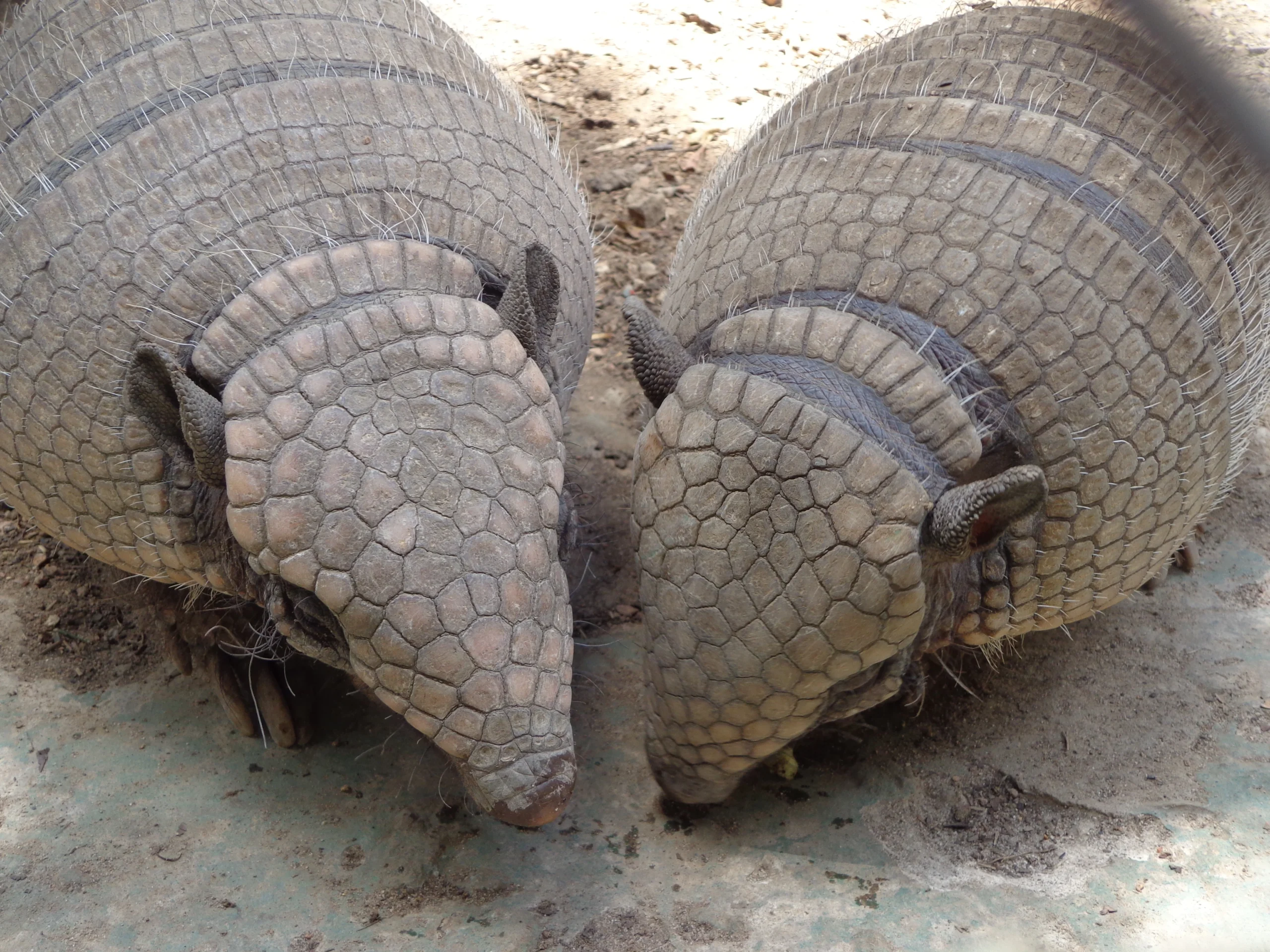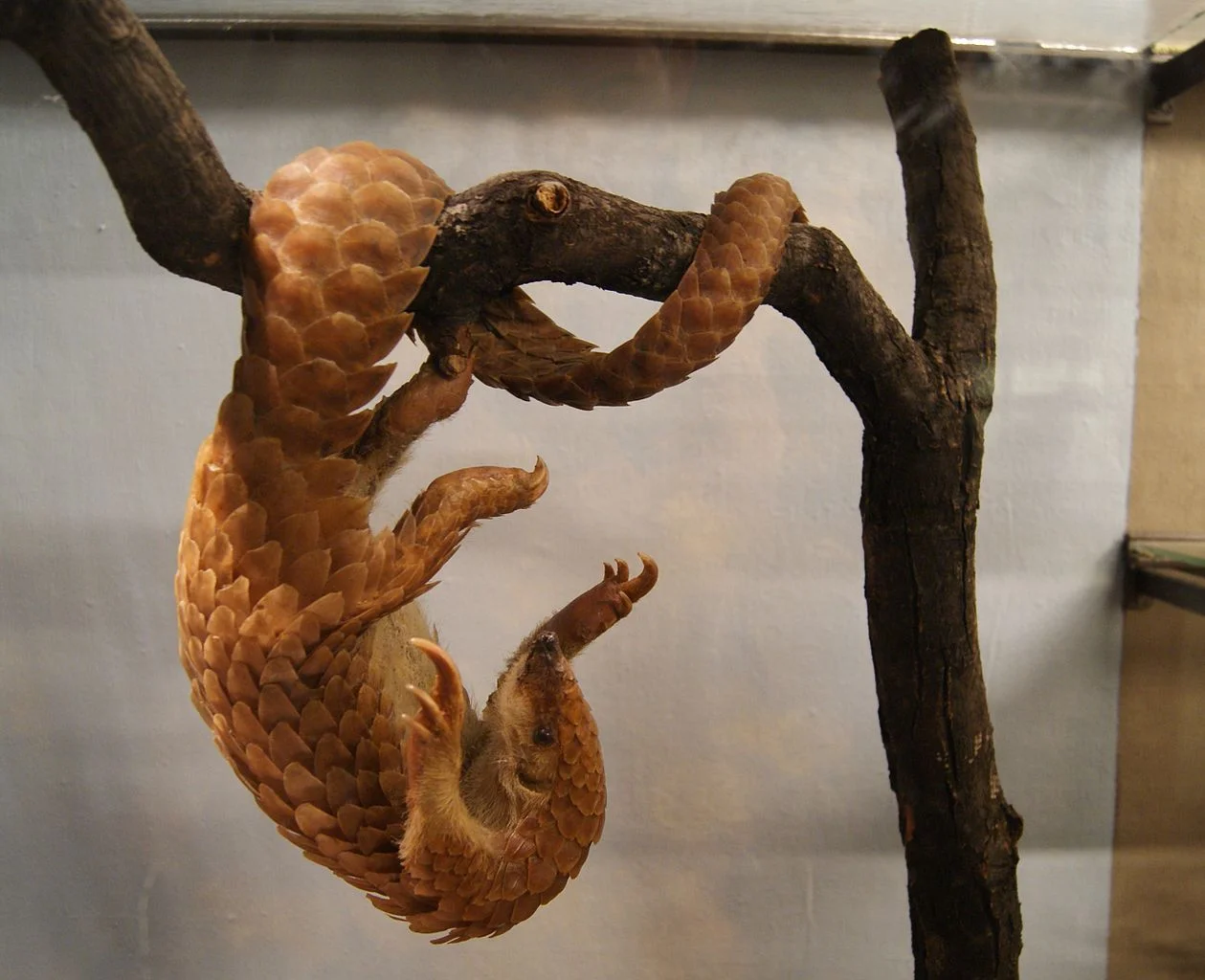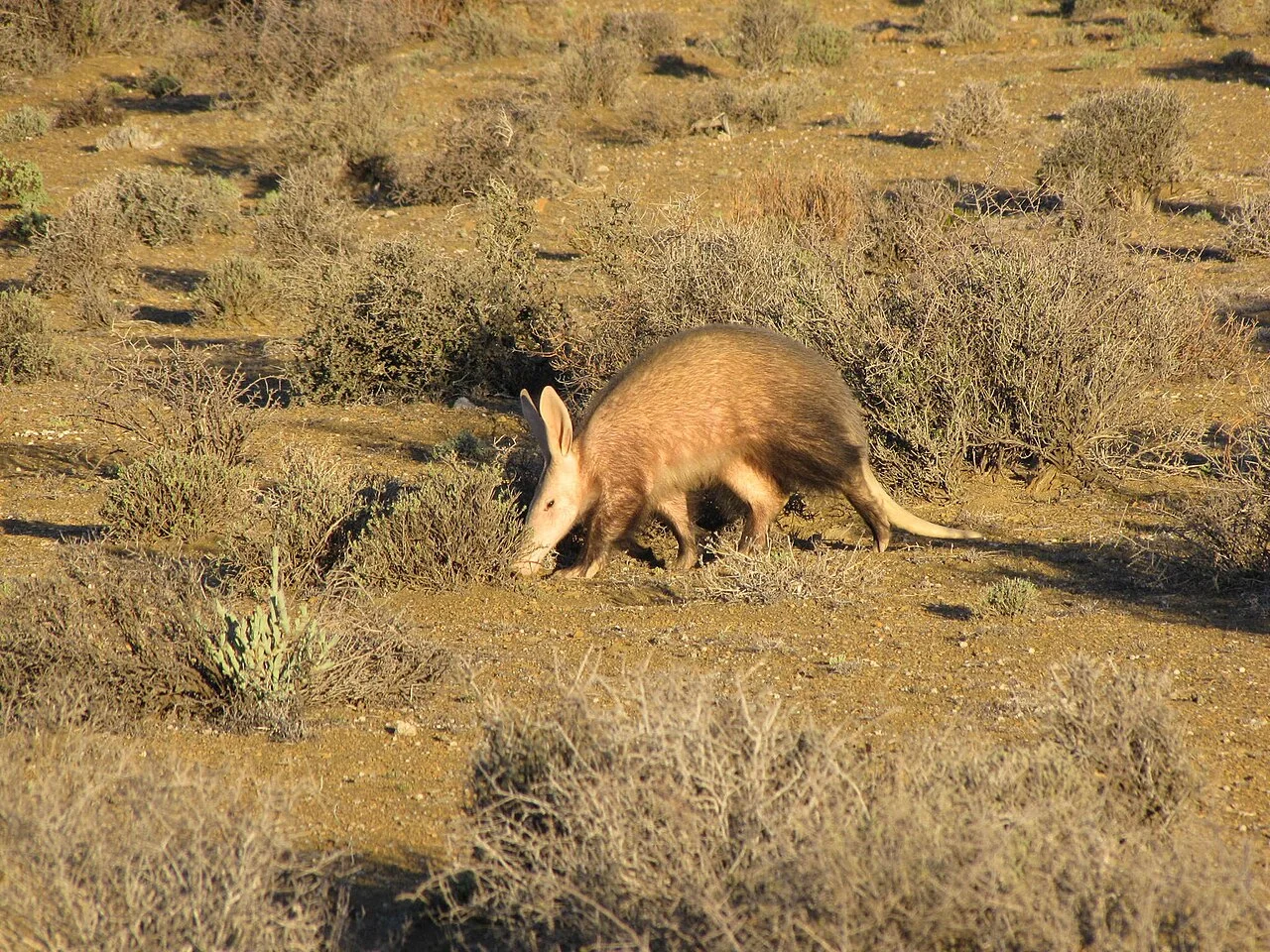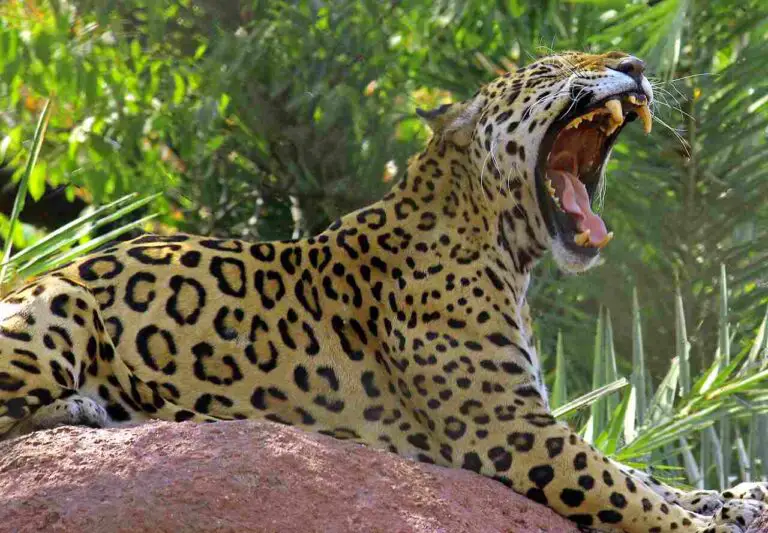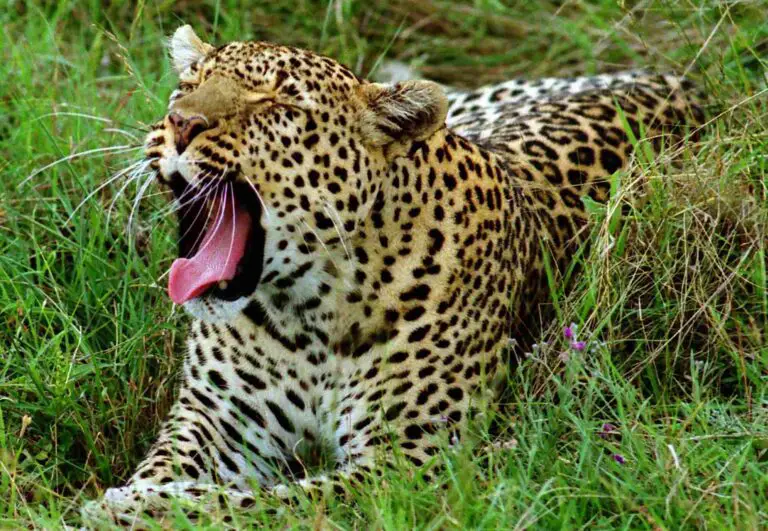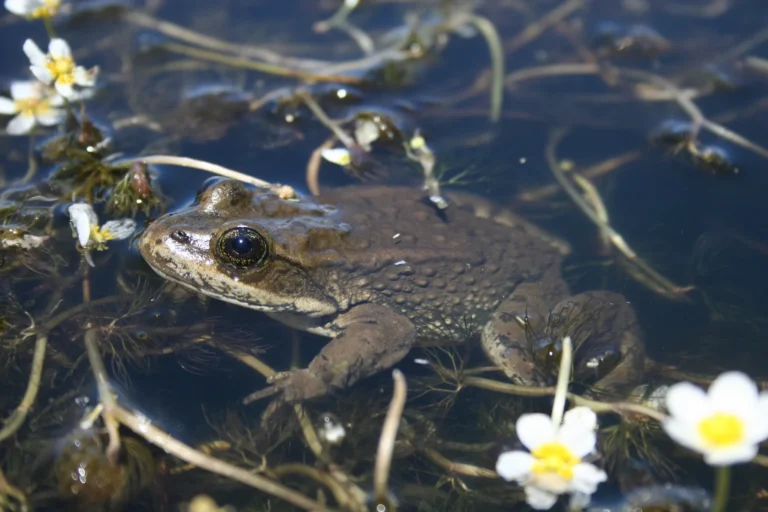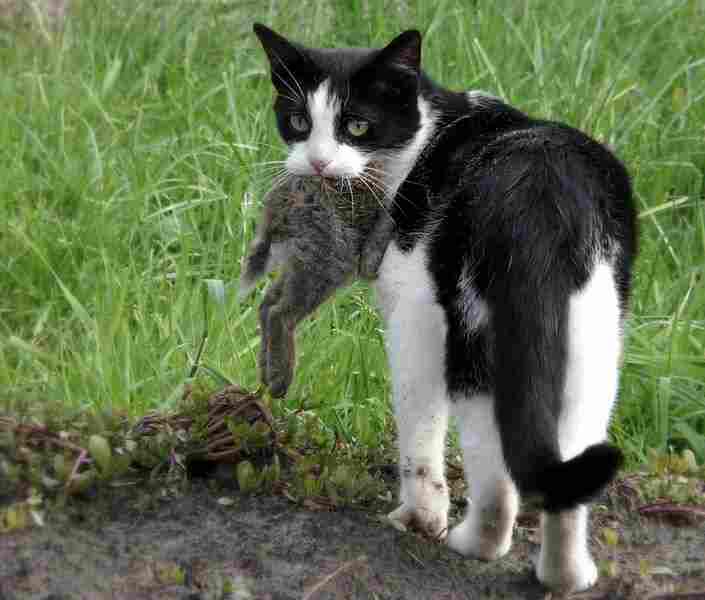Armadillo Vs Anteater Size, Weight, Overall Comparison
Drawing parallels between an armadillo and an anteater unveils the intricacies of their shared evolutionary lineage and their native habitats in Central and South America. Despite their common ancestry, these mammals have evolved distinctive adaptations, with both featuring a long tongue and pointy snout. However, the armadillo, smaller in size, sports bony protective armor, while the anteater, larger and heavier, opts for short fur. Understanding their shared traits and unique features provides insights into the evolutionary paths of these Central and South American mammals.
I. Common Evolutionary Lineage:
– Armadillos and anteaters share a common evolutionary lineage, showcasing their closely related ancestry and adaptation to the diverse ecosystems of Central and South America.
II. Native Habitats:
– Both armadillos and anteaters are native to Central and South America, highlighting their adaptation to the environmental conditions prevalent in this region.
III. Shared Features: Long Tongue and Pointy Snout:
– Armadillos and anteaters feature similar anatomical adaptations, including a long tongue and a pointy snout. These shared features reflect their convergent evolution in response to similar ecological roles.
IV. Armadillo’s Bony Protective Armor:
– Armadillos are characterized by bony protective armor, providing them with a unique defense mechanism. This armor distinguishes them visually and serves as protection against potential threats in their habitats.
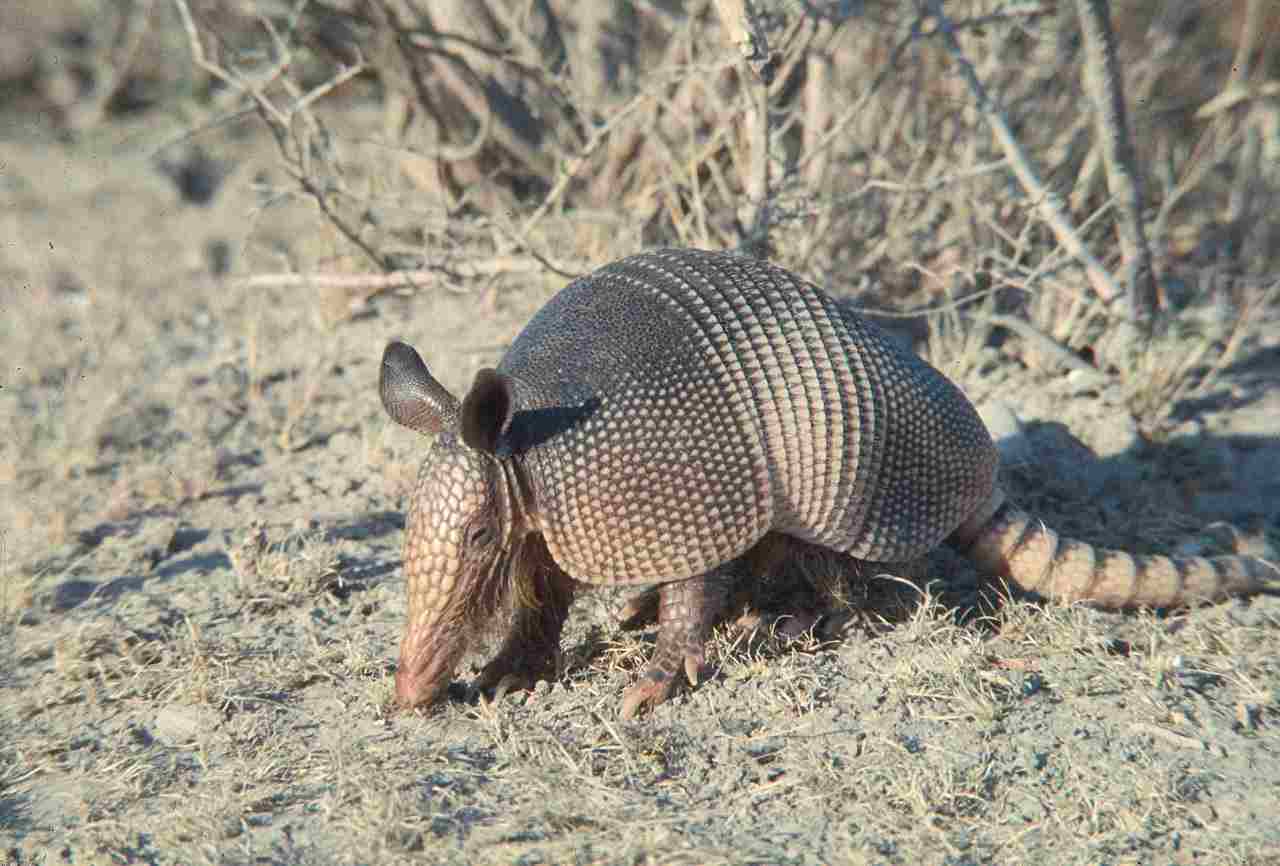
V. Anteater’s Short Fur:
– In contrast, anteaters boast short fur, a feature that aligns with their foraging habits and contributes to their overall appearance. This fur serves various purposes, including insulation and tactile sensory functions.
VI. Size Disparity:
– Armadillos, on average, are smaller in size compared to anteaters. This size difference reflects the distinct ecological roles and adaptations within their shared habitat.
VII. Anteater’s Advantage in a Fight:
– In a potential confrontation, the anteater holds an advantage over the armadillo due to its larger size, heavier build, and often more agile nature. Additionally, the prominent claws of the anteater further contribute to its potential dominance in a competitive scenario.
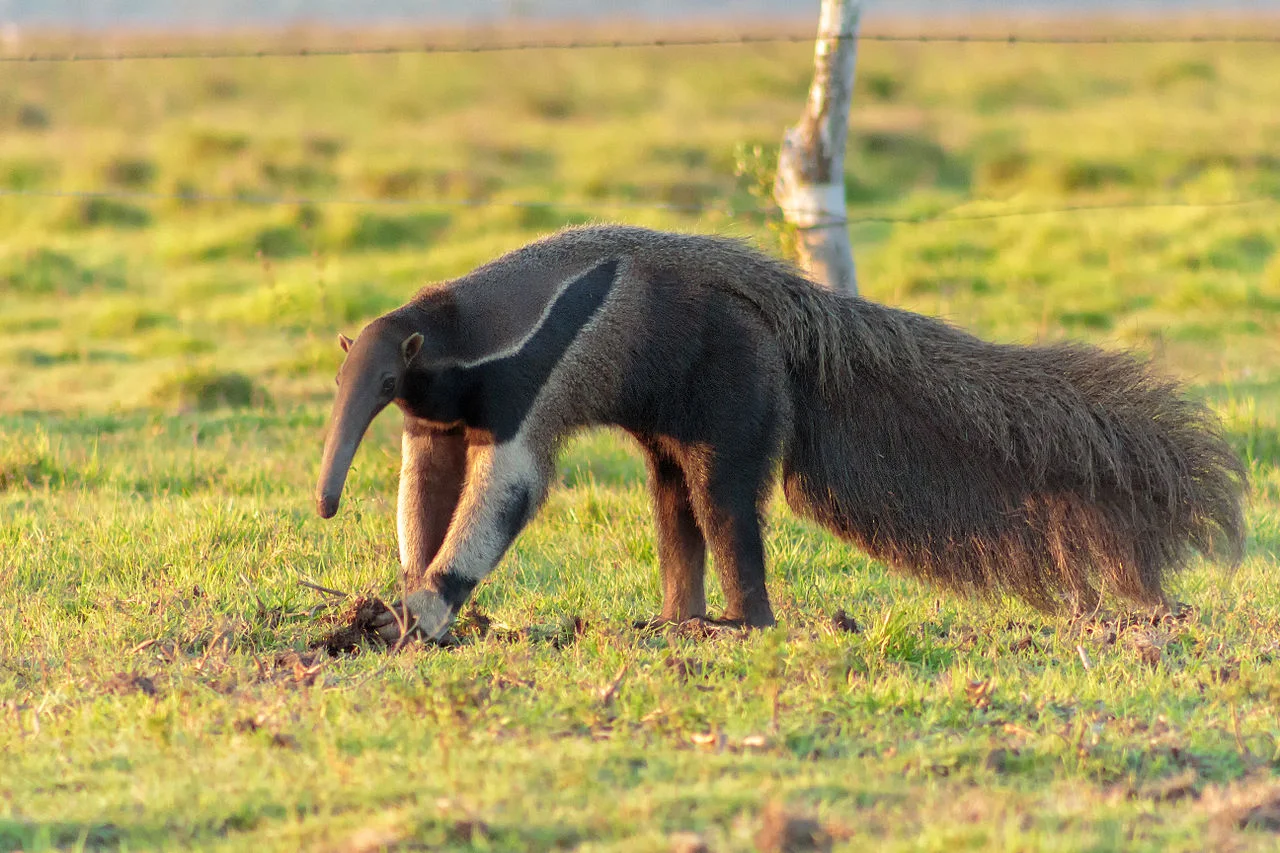
VIII. Real-life Predator Dynamics:
– In a real-life encounter, the anteater’s larger size, weight, agility, and formidable claws would likely give it an edge over the armadillo, highlighting the practical consequences of their evolutionary adaptations in competitive situations.
IX. Conservation Considerations:
– Recognizing the shared ancestry and potential conflicts between armadillos and anteaters emphasizes the need for tailored conservation strategies. Preserving the natural habitats of these closely related mammals contributes to the overall health and balance of Central and South American ecosystems, safeguarding biodiversity in their native regions.
*Details of Comparison
| Criteria | Armadillo | Anteater |
| Taxonomy | Order – Cingulata, Family – Dasypodidae |
Order – Pilosa, Suborder – Vermilingua, Family – Myrmecophagidae
|
| Appearance | Bony armor, pointed snout |
Long snout, fur-covered body
|
| Size | 5 to 59 inches | 3 to 7 feet |
| Weight | 3 oz to 120 lbs | 40 to 140 lbs |
| Dentition | Simple teeth |
Toothless jaws, long sticky tongue
|
| Offensive Advantages | Sharp claws for digging |
Sharp claws for tearing termite mounds
|
| Defensive Advantages | Armored shell, rolling into a ball |
Agility and forelimbs
|
| Speed | Not known for high speed |
Not known for high speed
|
| Agility | Moderate | Higher |
| Senses | Keen sense of smell |
Rely heavily on sense of smell
|
| Physical Capacity | Robust digging, armored shell |
Climbing, digging, specialized jaws
|
| Habitat Preference | Diverse environments globally |
Tropical habitats in Central, South America
|
| Tracks | Claw marks, armored shell pattern |
Claw marks, more subtle
|
| Lifespan | Varies, around 4 to 5 years |
Longer, around 12 to 15 years
|
| Feeding | Omnivores |
Specialized insectivores
|
| Intelligence | Modest | Modest |
| Social Behavior | Generally solitary |
Generally solitary
|
| Reproduction | Single offspring, shorter gestation |
Single offspring, longer gestation
|
| Parental Behavior | Limited care, quick independence |
More involved, carrying young on back
|
| Proximity to Humans | Adaptable to human-altered areas |
More associated with natural habitats
|
| Behavior Toward Humans | Generally avoid confrontations |
Generally avoid confrontations
|
| Danger to Humans | Minimal under normal circumstances |
Minimal under normal circumstances
|
| Precautions | Avoid direct contact, disease risk |
Exercise caution, especially if defensive
|
| Conservation Status | Varies by species |
Some vulnerable or endangered due to habitat loss and hunting
|
1. Taxonomy
Armadillo:
Order: Cingulata
Family: Dasypodidae
Subfamilies: Dasypodinae, Euphractinae, Tolypeutinae, Chlamyphorinae
Anteater:
Order: Pilosa
Suborder: Vermilingua
Family: Myrmecophagidae
Genera: Myrmecophaga, Tamandua
2. Appearance
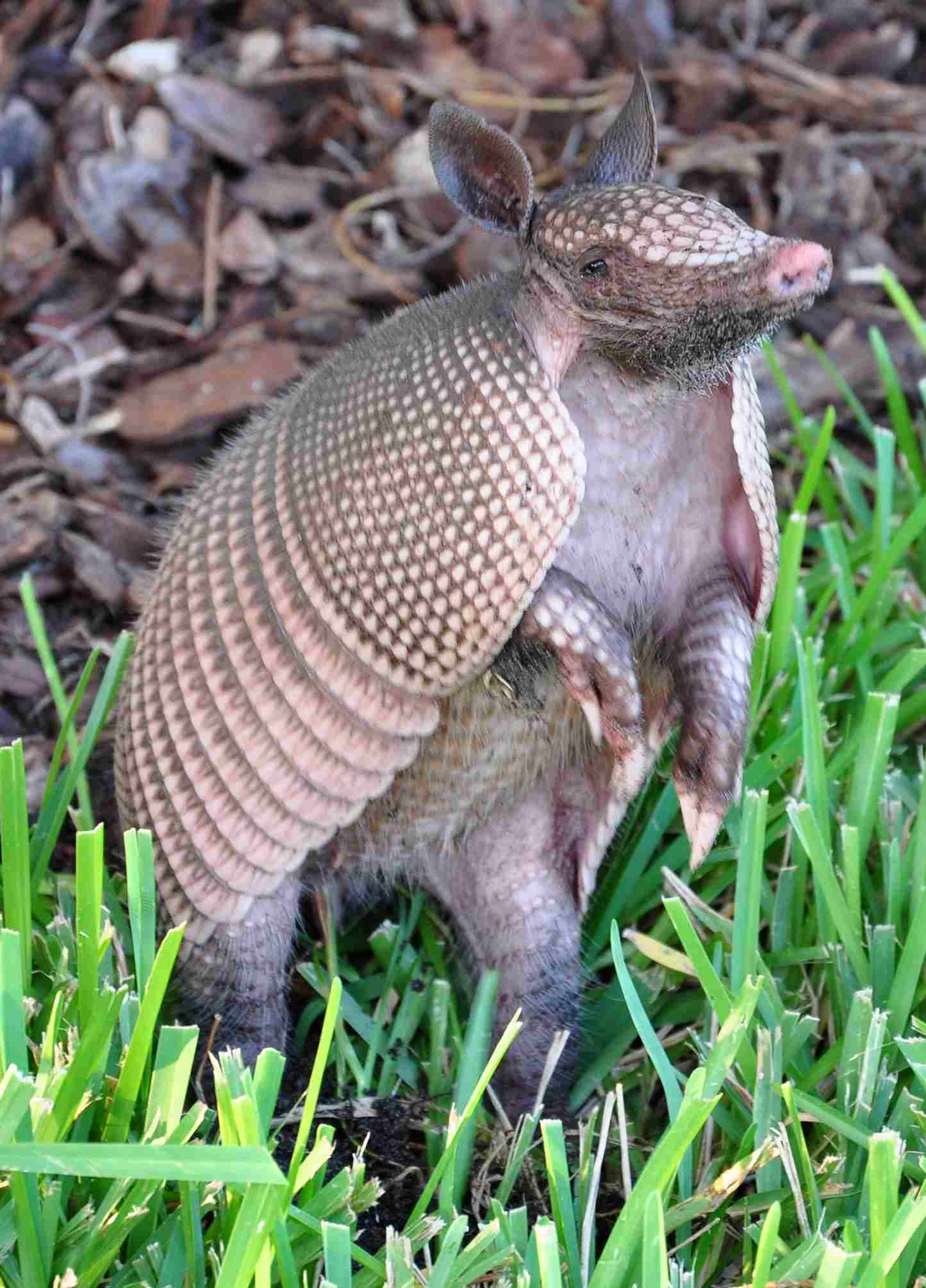
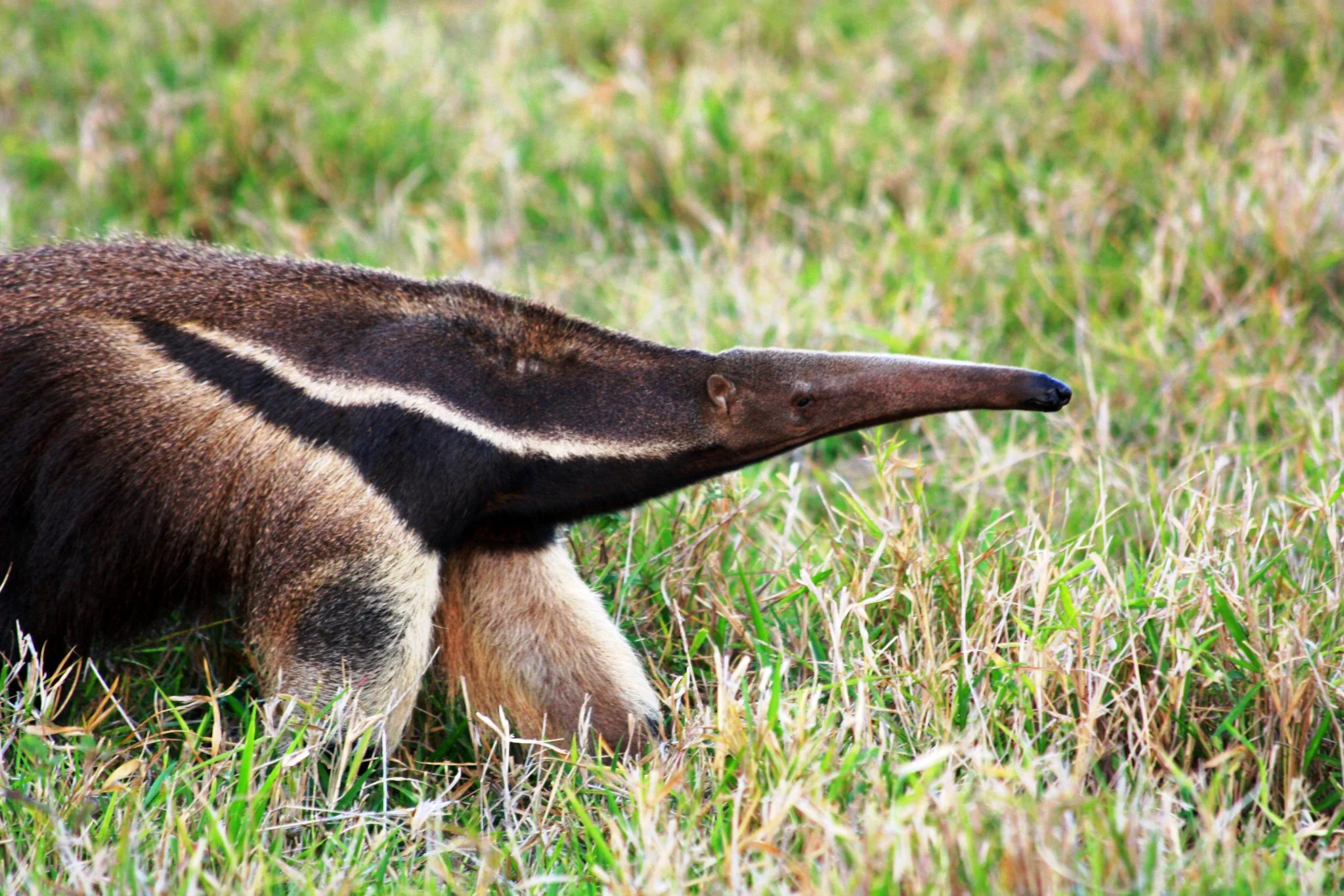
Armadillo:
Armadillos are characterized by a bony, armor-like shell covering their body, composed of overlapping plates.
The head typically has a pointed snout, and the tail varies in length among different species.
Anteater:
Anteaters have a distinctive appearance with long snouts adapted for feeding on ants and termites.
Their bodies are slender, covered in coarse hair, and they have a bushy tail.
Comparison:
Armadillos have a protective shell, while anteaters have a sleek, fur-covered body adapted for their feeding habits.
Ecological Implications:
Armadillo’s armor provides defense against predators, enabling them to thrive in various environments.
Anteaters’ sleek design aids in efficient movement through their habitat, helping them access ant and termite nests.
3. Size
Armadillo:
Sizes vary among species, ranging from about 5 to 59 inches (13 to 150 cm) in length.
Anteater:
Anteaters are generally larger, with lengths ranging from 3 to 7 feet (0.9 to 2.1 meters).
Comparison:
Anteaters tend to be larger than armadillos, possibly reflecting differences in their ecological roles and dietary needs.
Ecological Implications:
Size can influence the ecological niche occupied by each species, affecting interactions with other organisms and resource utilization.
4. Weight
Armadillo:
Armadillo weights range from 3 ounces (85 grams) to 120 pounds (54 kg) depending on the species.
Anteater:
Anteaters are generally heavier, with weights ranging from 40 to 140 pounds (18 to 64 kg).
Comparison:
Anteaters exhibit greater weight, potentially linked to their larger size and dietary requirements.
Ecological Implications:
Weight influences energy requirements, foraging strategies, and the impact each species has on local ecosystems.
5. Dentition
Armadillo:
Armadillos possess simple teeth adapted for grinding plant material and insects.
Anteater:
Anteaters have specialized toothless jaws with a long, sticky tongue for extracting ants and termites.
Comparison:
Armadillos have a more generalized dentition, whereas anteaters have evolved specific adaptations for their insectivorous diet.
Ecological Implications:
Dentition reflects the dietary specialization of each species, influencing their role in nutrient cycling and ecosystem dynamics.
6. Physical Offensive Advantages
Armadillo:
Armadillos may use their sharp claws for digging and defense against smaller predators.
Anteater:
Anteaters rely on their long, powerful claws to tear into termite mounds and ant nests.
Comparison:
Both species employ their claws as offensive tools, adapted for specific purposes related to their ecological roles.
Ecological Implications:
Offensive advantages contribute to their foraging efficiency and ability to exploit food resources within their habitats.
7. Physical Defensive Advantages
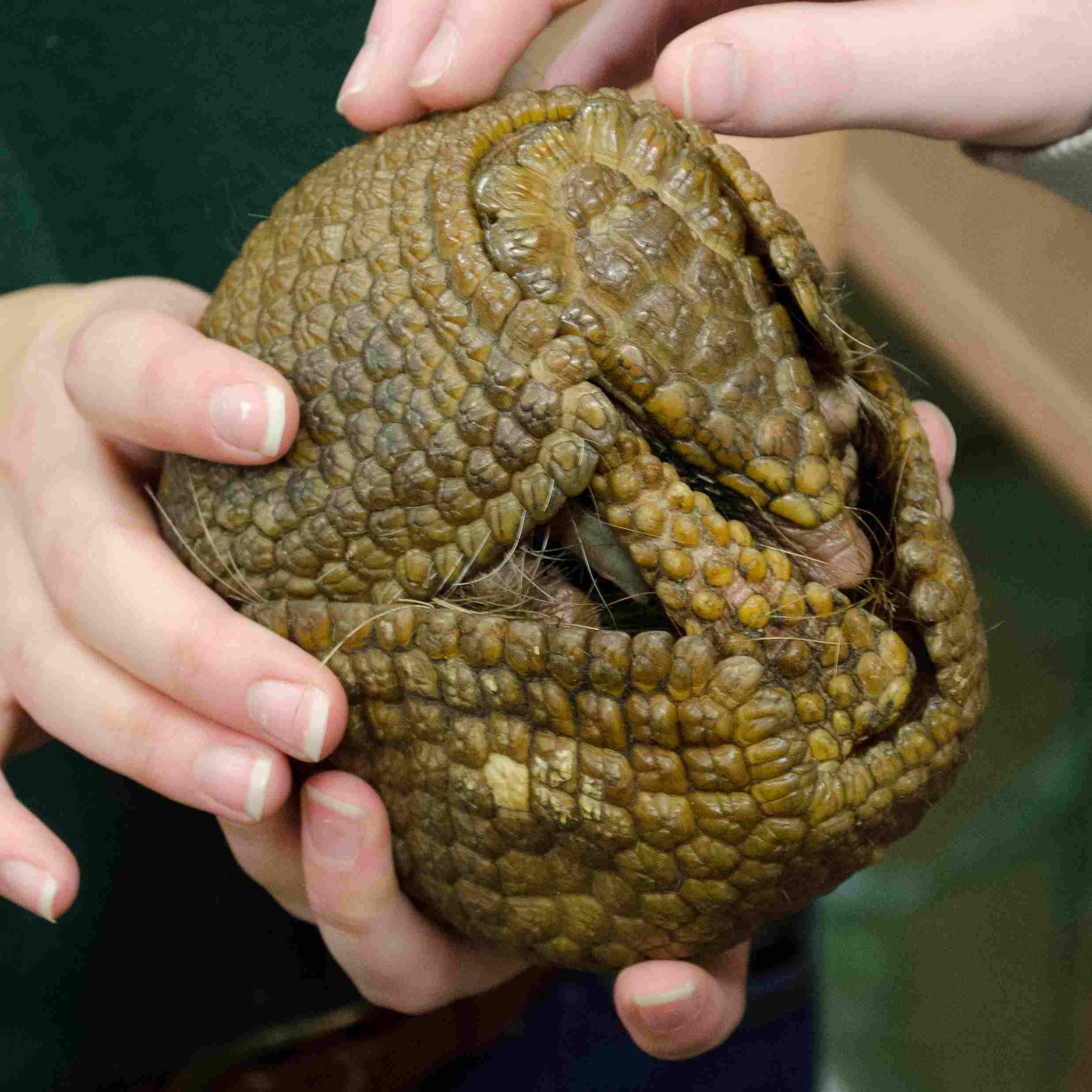
Armadillo:
Armadillos can roll into a ball, using their armored shell as protection against predators.
Anteater:
Anteaters lack significant physical defenses but may use their powerful forelimbs for self-defense.
Comparison:
Armadillos have a unique defensive mechanism with their protective shell, while anteaters rely more on agility and evasion.
Ecological Implications:
Defensive strategies impact predator-prey dynamics, influencing the survival and behavior of both species.
8. Speed (Km/hour or Mile/hour)
Armadillo:
Armadillos are not known for high-speed movement; they typically move slowly on land.
Anteater:
Anteaters are more agile but not exceptionally fast runners.
Comparison:
Neither armadillos nor anteaters are known for high-speed locomotion, reflecting their foraging strategies.
Ecological Implications:
Moderate speed may be sufficient for their habitat requirements, balancing energy expenditure with foraging efficiency.
9. Agility
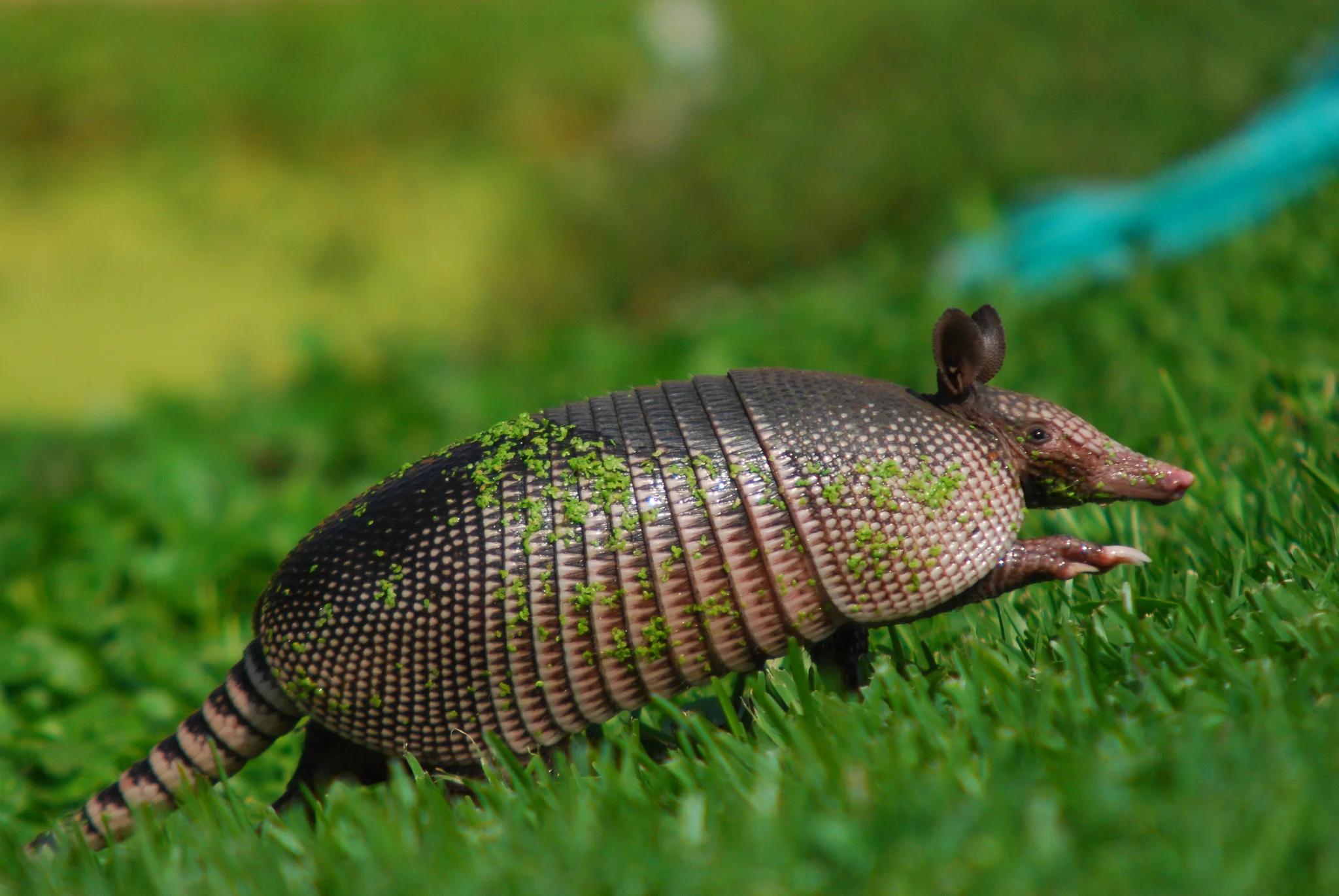
Armadillo:
Armadillos exhibit a degree of agility, particularly in digging and navigating varied terrain.
Anteater:
Anteaters showcase agility in climbing trees and maneuvering through vegetation.
Comparison:
Anteaters generally display higher agility, reflecting their need to access arboreal ant and termite nests.
Ecological Implications:
Agility contributes to their ability to exploit different ecological niches within their respective habitats.
10. Senses
Armadillo:
Armadillos have a keen sense of smell, aiding in foraging for insects and plant material.
Anteater:
Anteaters rely heavily on their sense of smell to locate ant and termite colonies.
Comparison:
Both species heavily depend on their sense of smell, crucial for detecting food sources and navigating their environments.
Ecological Implications:
A heightened sense of smell is adaptive for locating prey, enhancing their foraging efficiency.
11. Overall Physical Capacity
Armadillo:
Armadillos possess robust digging capabilities with their strong claws, adapting to their burrowing habits.
Anteater:
Anteaters excel in climbing trees and digging, specialized for accessing ant and termite nests.
Comparison:
The physical capacities of armadillos and anteaters are adapted to their specific ecological roles and habitats.
Ecological Implications:
Their physical abilities directly impact their success in foraging, survival, and competition within their ecosystems.
12. Habitat Preference(s) and Geographic Region
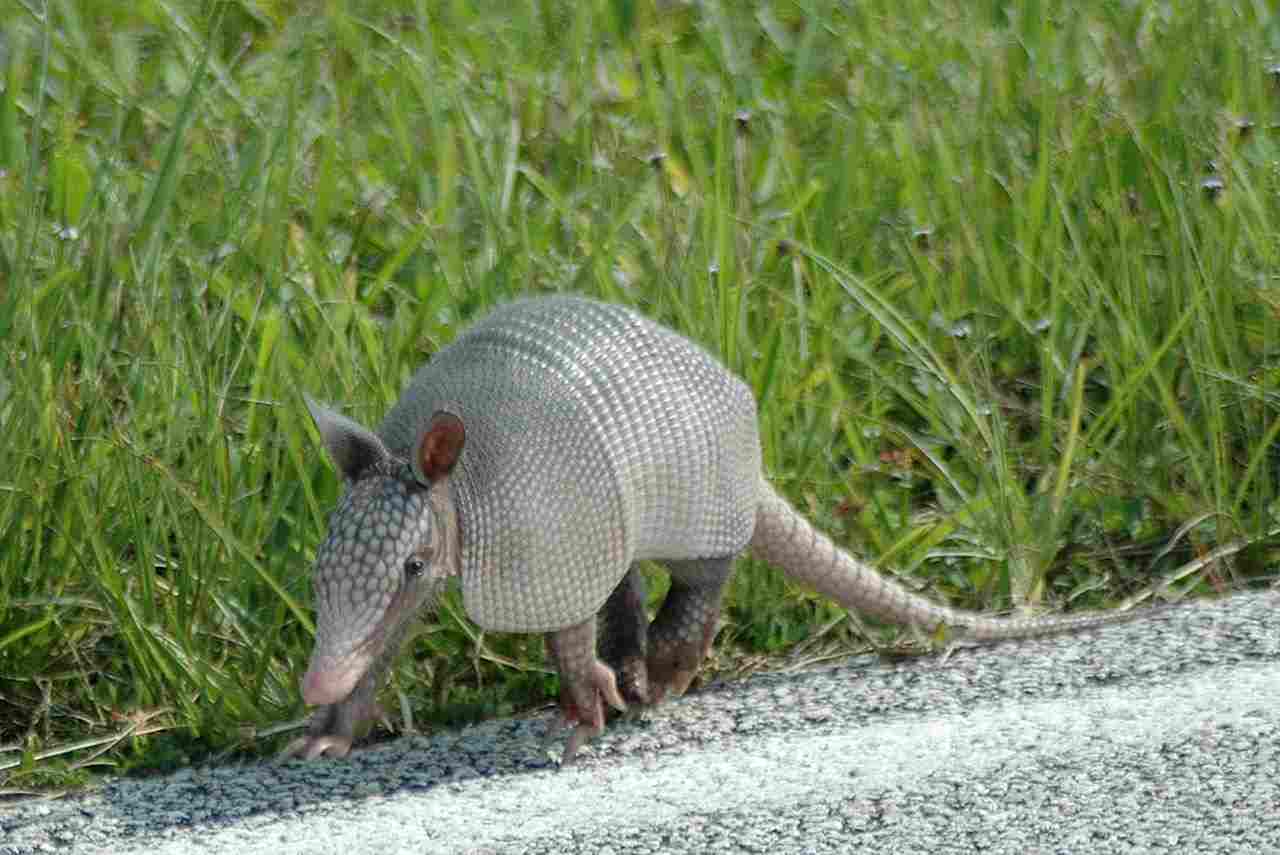
Armadillo:
Armadillos inhabit diverse environments, including grasslands, forests, and deserts, with a range extending from the Americas to Europe.
Anteater:
Anteaters prefer tropical and subtropical habitats, including rainforests and grasslands, primarily found in Central and South America.
Comparison:
While both species inhabit varied environments, armadillos have a broader geographic range, including parts of North America and Europe.
Ecological Implications:
Habitat preferences influence their interactions with other species, resource utilization, and adaptations to specific environmental conditions.
13. Tracks
Armadillo:
Armadillo tracks may show distinct claw marks and the pattern of their armored shell.
Anteater:
Anteater tracks exhibit claw marks, but they are generally more subtle, reflecting their less armored body.
Comparison:
The tracks of both species reveal clues about their movements and behaviors, with armadillo tracks potentially more distinctive.
Ecological Implications:
Tracking can aid researchers in studying their behavior, distribution, and ecological roles within specific habitats.
14. Lifespan
Armadillo:
Armadillo lifespans vary by species, with some living around 4 to 5 years in the wild.
Anteater:
Anteaters generally have longer lifespans, ranging from 12 to 15 years in the wild.
Comparison:
Anteaters tend to live longer lives, possibly linked to their larger size and different ecological roles.
Ecological Implications:
Lifespan influences reproductive strategies, population dynamics, and overall ecological contributions within their habitats.
15. Mode of Feeding
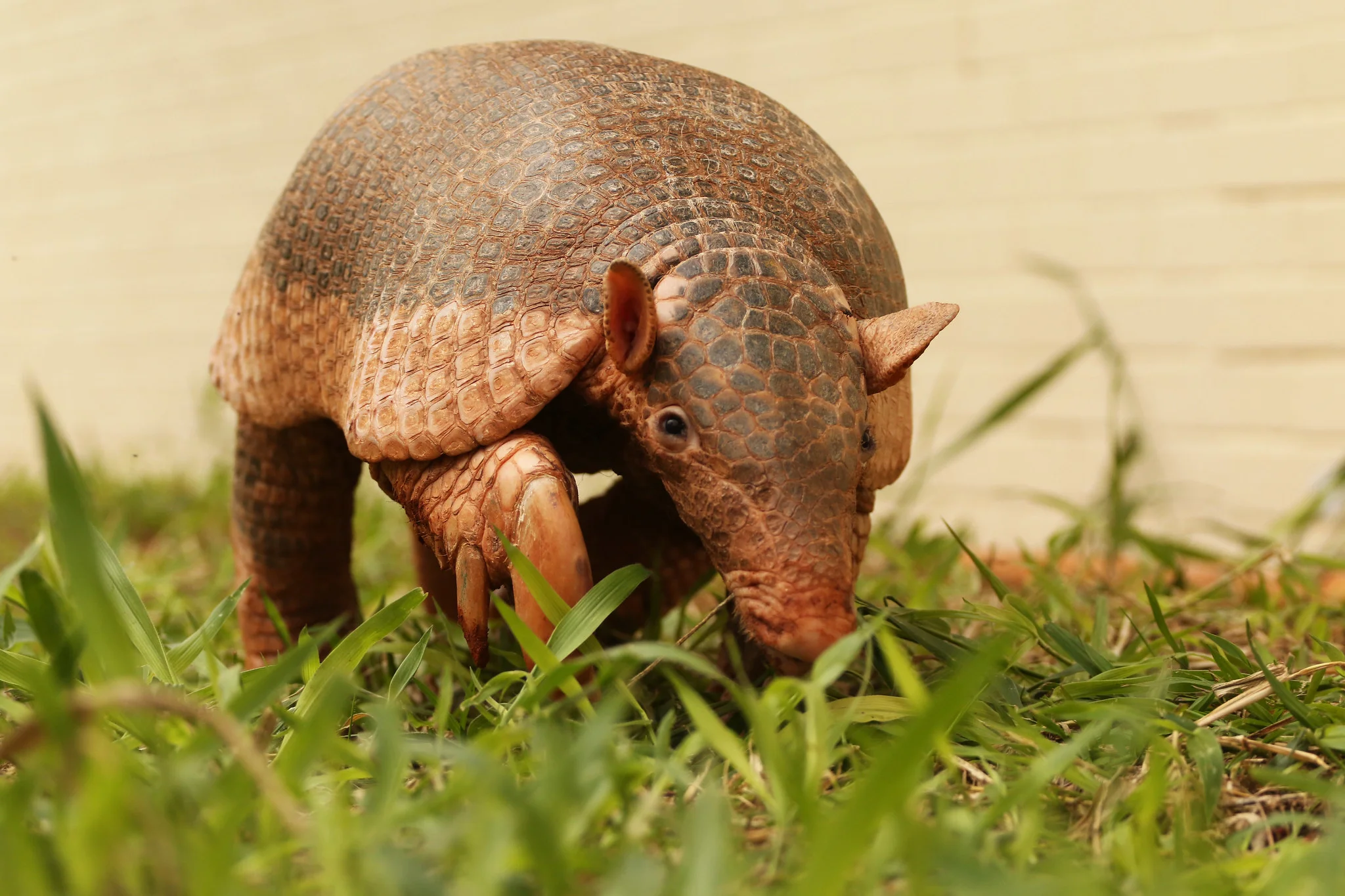
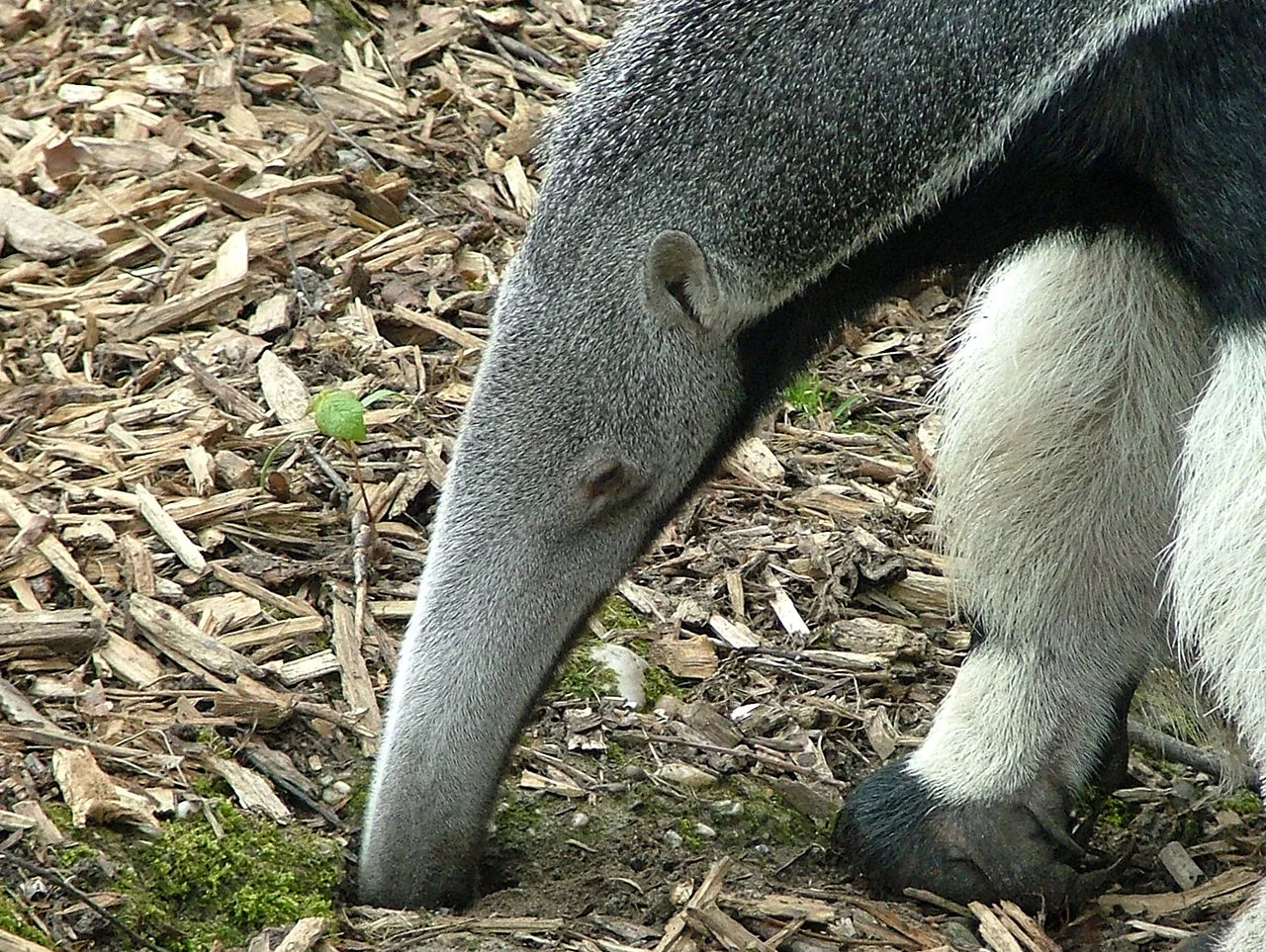
Armadillo:
Armadillos are omnivores, feeding on a diet of insects, small vertebrates, and plant material.
Anteater:
Anteaters are specialized insectivores, primarily consuming ants and termites.
Comparison:
Armadillos exhibit a more varied diet, including both animal and plant matter, while anteaters are highly specialized insectivores.
Ecological Implications:
Feeding modes impact their ecological roles, competition with other species, and contributions to nutrient cycling within ecosystems.
16. Intelligence
Armadillo:
Armadillos are not known for high intelligence and rely more on instincts and sensory capabilities.
Anteater:
Anteaters, while not highly intelligent, demonstrate specialized behaviors in locating and consuming their insect prey.
Comparison:
Both species exhibit instinctual behaviors, with anteaters showcasing specialized skills in insect foraging.
Ecological Implications:
Intelligence, though modest, influences problem-solving abilities and adaptations to their environments.
17. Social Behavior
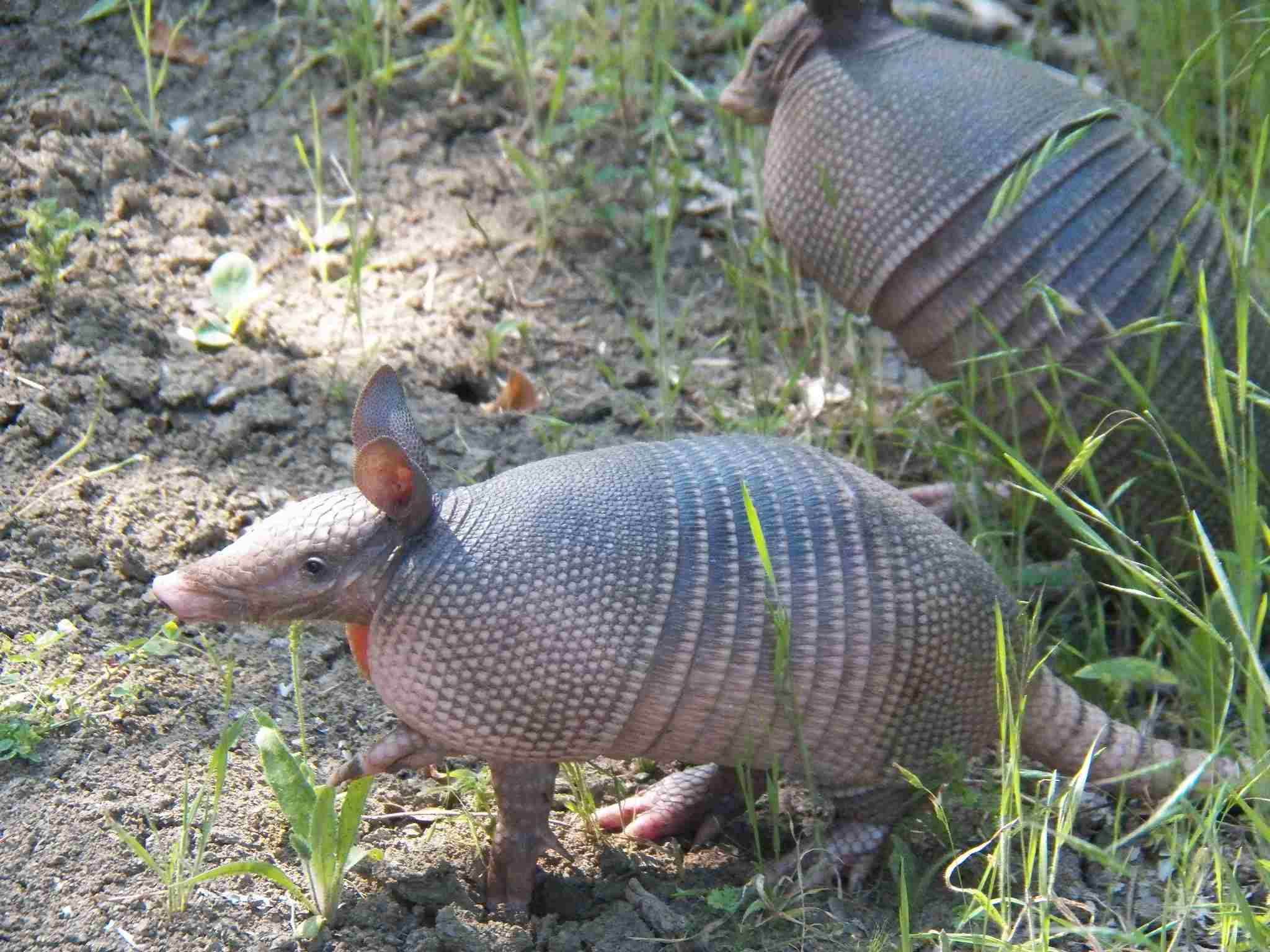
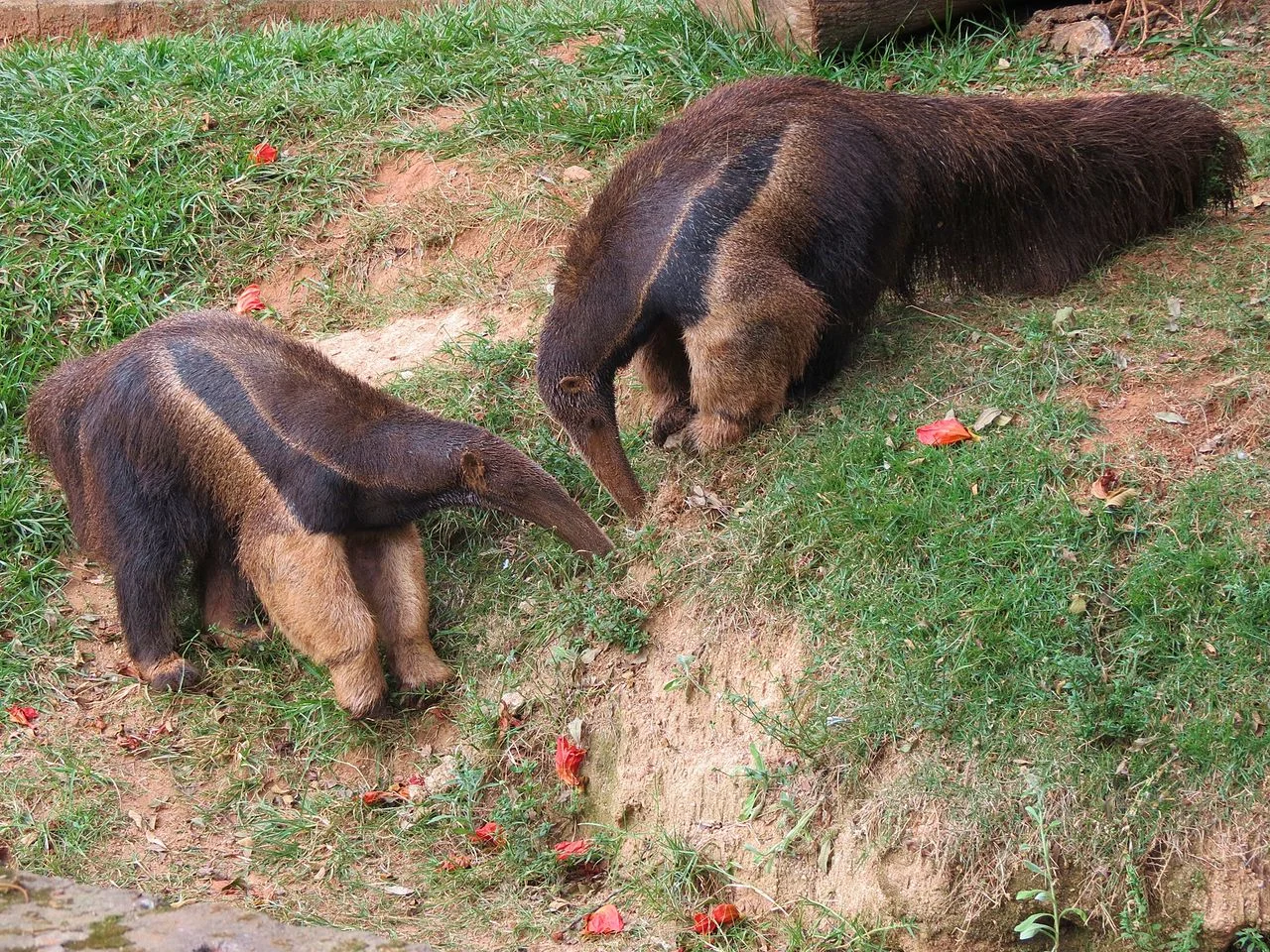
Armadillo:
Armadillos are generally solitary animals, with limited social interactions except during mating.
Anteater:
Anteaters are also mostly solitary, coming together primarily for mating purposes.
Comparison:
Both species exhibit solitary behavior, reflecting their more independent lifestyles.
Ecological Implications:
Solitary behaviors may reduce competition for resources within their habitats, influencing population dynamics and distribution.
18. Mode of Reproduction
Armadillo:
Armadillos typically give birth to a single, well-developed young after a gestation period of a few months.
Anteater:
Anteaters have a longer gestation period, and they usually give birth to a single offspring.
Comparison:
Both species have relatively low reproductive rates, with a focus on ensuring the survival and development of a single offspring.
Ecological Implications:
Reproductive strategies impact population dynamics, and the care devoted to each offspring influences overall ecological contributions.
19. Parental Behavior
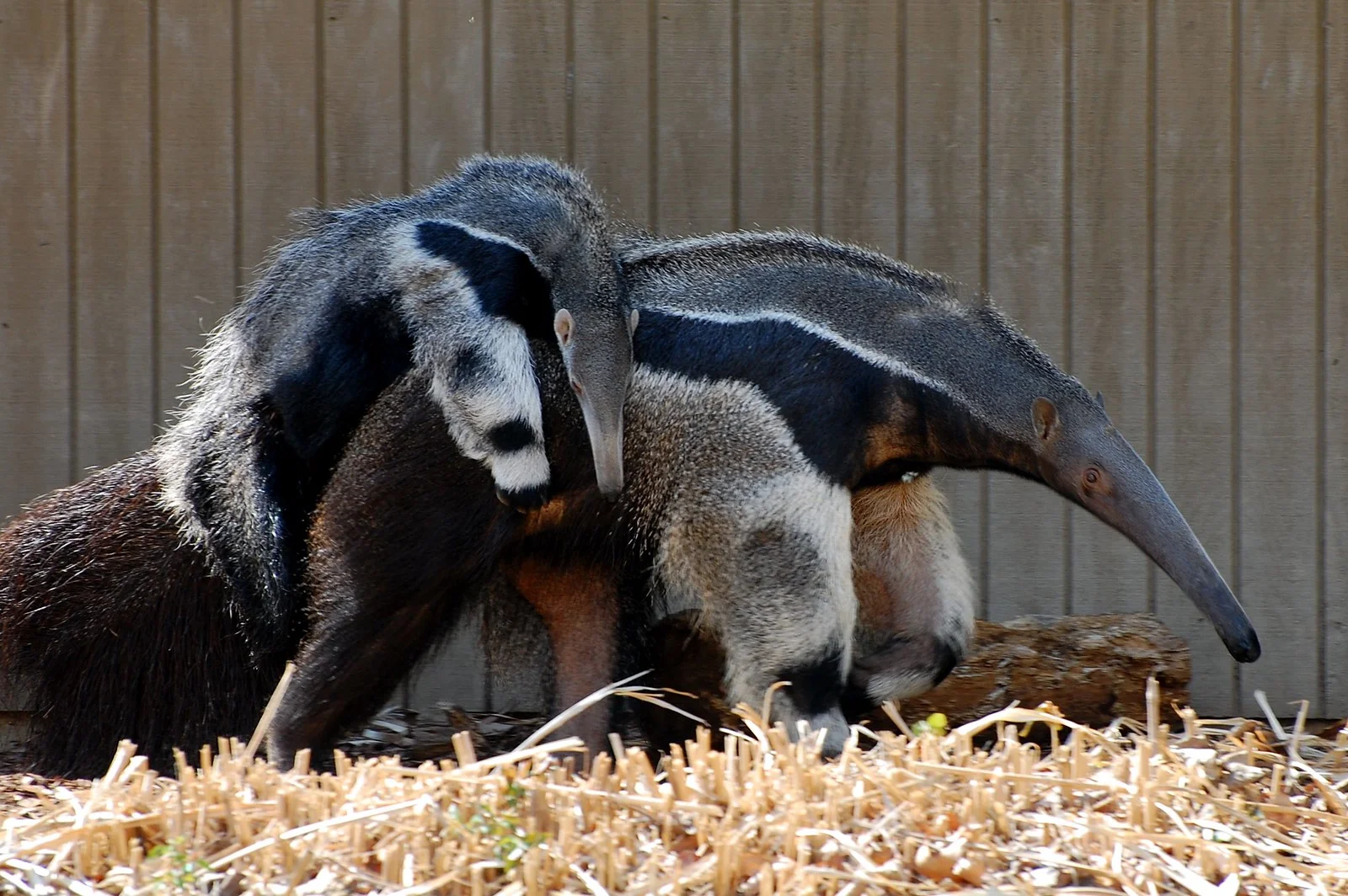
Armadillo:
Armadillo mothers provide limited care to their young, who become independent relatively quickly.
Anteater:
Anteater mothers carry their young on their backs for an extended period, providing protection and nourishment.
Comparison:
Anteaters display more involved parental care, possibly linked to the longer gestation period and solitary nature of their lifestyle.
Ecological Implications:
Parental care influences the survival rates of offspring and contributes to the overall reproductive success of each species.
20. Proximity to Human-Inhabited Areas
Armadillo:
Some armadillo species adapt well to human-altered environments, occasionally venturing into urban areas.
Anteater:
Anteaters may encounter human-inhabited areas but are generally more associated with natural habitats.
Comparison:
Armadillos, due to their adaptable nature, may be more commonly found in proximity to human settlements.
Ecological Implications:
Proximity to humans can lead to increased interactions, potential conflicts, and influence the conservation status of each species.
21. Behavior Toward Humans
Armadillo:
Armadillos may exhibit defensive behaviors if threatened but generally avoid direct confrontation with humans.
Anteater:
Anteaters are not aggressive toward humans, but they may react defensively if cornered or feel threatened.
Comparison:
Both species typically avoid confrontations with humans, but armadillos may be more likely to share spaces due to their adaptability.
Ecological Implications:
Human interactions can impact the behavior and survival of these animals, influencing their distribution and overall ecological roles.
22. Danger Posed to Humans
Armadillo:
Armadillos are generally not considered dangerous to humans, but some species may carry diseases like leprosy.
Anteater:
Anteaters are not inherently dangerous, but if cornered, they may use their powerful claws for defense.
Comparison:
Both species pose minimal danger to humans under normal circumstances, but interactions should be approached with caution.
Ecological Implications:
Minimal threat to humans allows for coexistence but raises awareness of potential disease transmission risks, particularly with armadillos.
23. Associated Precautions
Armadillo:
Avoid direct contact, especially with their bodily fluids, to reduce the risk of disease transmission.
Anteater:
Caution should be exercised around anteaters, especially if they display defensive behavior.
Comparison:
Precautions around both species involve minimizing close interactions and avoiding actions that may trigger defensive responses.
Ecological Implications:
Awareness and responsible behavior around these animals contribute to their conservation and the prevention of potential conflicts.
24. Conservation Status
Armadillo:
Various armadillo species have different conservation statuses, with some considered of least concern, while others are near-threatened or vulnerable.
Anteater:
Anteaters face conservation concerns, with some species classified as vulnerable or endangered due to habitat loss and hunting.
Comparison:
Conservation statuses vary, reflecting the different ecological pressures and human impacts on their respective habitats.
Ecological Implications:
Conservation efforts are crucial to maintaining biodiversity and ecological balance, particularly for species facing higher threats.
*Summary of Comparison
Taxonomy:
Armadillo: Order – Cingulata, Family – Dasypodidae
Anteater: Order – Pilosa, Suborder – Vermilingua, Family – Myrmecophagidae
Appearance:
Armadillos have a bony, armor-like shell; pointed snouts.
Anteaters have a distinctive appearance with long snouts and a fur-covered body.
Size:
Armadillos range from 5 to 59 inches in length.
Anteaters are generally larger, with lengths from 3 to 7 feet.
Weight:
Armadillos weigh between 3 ounces to 120 pounds.
Anteaters are generally heavier, with weights from 40 to 140 pounds.
Dentition:
Armadillos have simple teeth for grinding.
Anteaters have toothless jaws with a long, sticky tongue.
Physical Offensive Advantages:
Both use sharp claws; armadillos for digging, anteaters for tearing into termite mounds.
Physical Defensive Advantages:
Armadillos can roll into a ball using their armored shell; anteaters rely on agility and forelimbs.
Speed:
Neither armadillos nor anteaters are known for high-speed movement.
Agility:
Anteaters generally display higher agility.
Senses:
Both heavily depend on their sense of smell.
Overall Physical Capacity:
Armadillos have robust digging capabilities; anteaters excel in climbing and digging.
Habitat Preference and Geographic Region:
Armadillos inhabit diverse environments globally.
Anteaters prefer tropical habitats in Central and South America.
Tracks:
Armadillo tracks may show claw marks and armored shell pattern.
Anteater tracks exhibit claw marks, but they are generally more subtle.
Lifespan:
Armadillos have varying lifespans, around 4 to 5 years.
Anteaters generally live longer, ranging from 12 to 15 years.
Mode of Feeding:
Armadillos are omnivores; anteaters are specialized insectivores.
Intelligence:
Both exhibit instinctual behaviors; anteaters demonstrate specialized insect foraging.
Social Behavior:
Both species are generally solitary, coming together primarily for mating.
Mode of Reproduction:
Both give birth to a single offspring, with armadillos having a shorter gestation period.
Parental Behavior:
Anteaters display more involved parental care, carrying their young on their backs.
Proximity to Human-Inhabited Areas:
Armadillos are adaptable to human-altered environments.
Anteaters are generally more associated with natural habitats.
Behavior Toward Humans:
Both generally avoid confrontations but may react defensively if threatened.
Danger Posed to Humans:
Both species pose minimal danger under normal circumstances.
Associated Precautions:
Caution advised for both, minimizing close interactions to reduce potential risks.
Conservation Status:
Various armadillo species have different conservation statuses.
Anteaters face conservation concerns, classified as vulnerable or endangered.
Conclusion
I. Similarities
Both armadillos and anteaters are adapted to specific ecological niches.
They share a low reproductive rate and focus on caring for a single offspring.
II. Differences
Armadillos have a broader geographic range and are more adaptable to human-altered environments.
Anteaters exhibit more involved parental care and face higher conservation concerns, particularly due to habitat loss and hunting.
